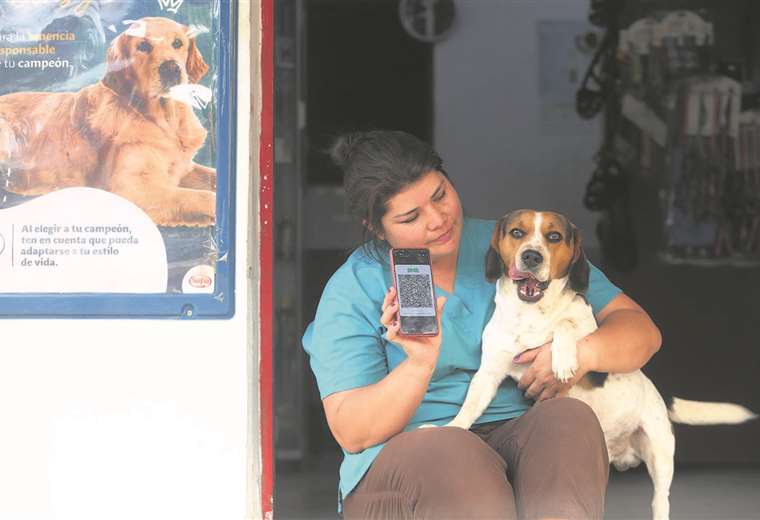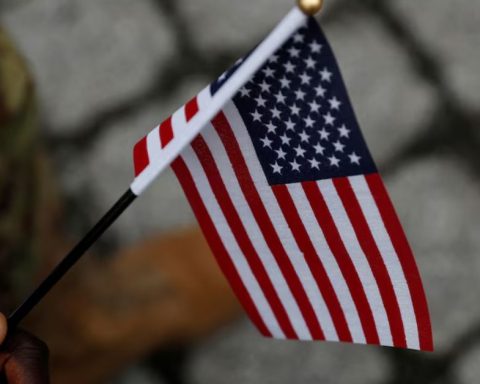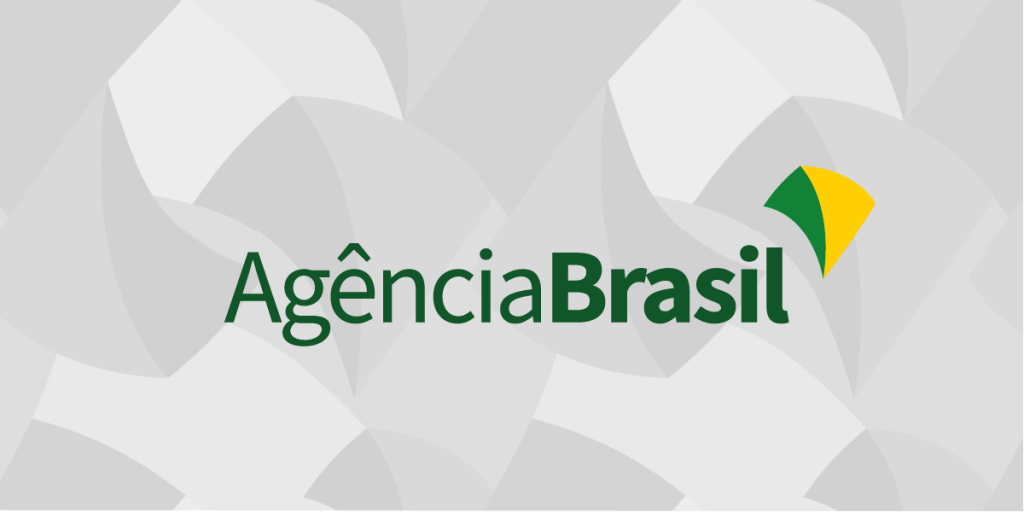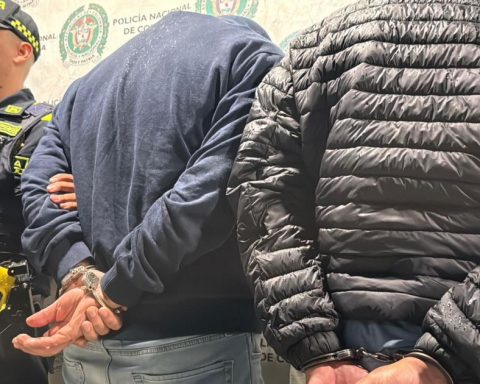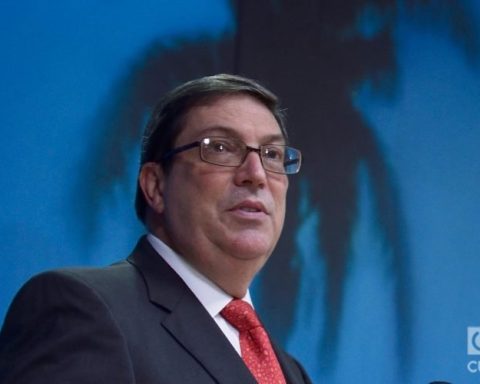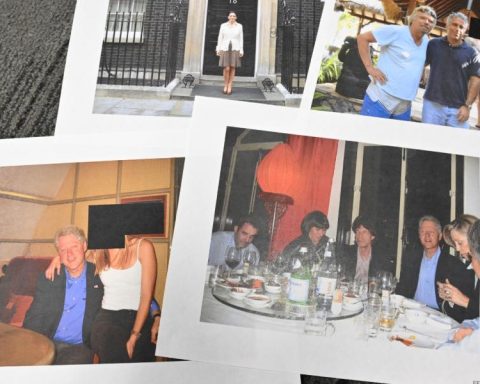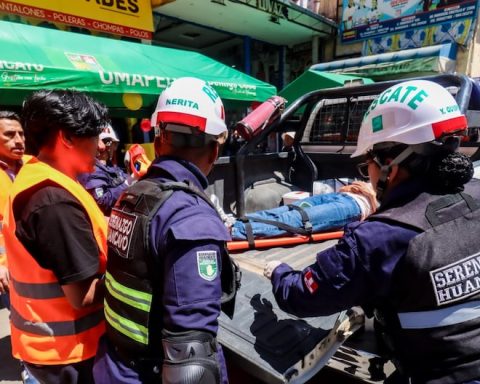September 13, 2022, 4:00 AM
September 13, 2022, 4:00 AM
“Before, without the QR code, I lost a lot of sales.” With that phrase, Víctor Hugo Ayma sums up the impact that the use of this technology has had on his business, a men’s clothing store located in the Barrio Lindo fair.
Ayma explained that since there are no ATMs at the fair or in its surroundings, QR payments have become the best alternative to make sales.
The merchant adopted the system in January of this year, after realizing its usefulness in the face of inquiries made by potential customers at Christmas time about its availability in their business. Currently, between 20 and 30% of Ayma’s sales are paid with QR.
The seller also highlights two elements associated with the new technology: increased sales opportunities and security. “Many people who are passing through see the merchandise, like it and are encouraged to buy it even without having cash, but paying with the code. In addition, sales for significant amounts are made without worrying about having to handle and transport a lot of money, ”he said.
The use of QR for payments and collections is possible thanks to Simple, a system promoted by Asoban (Association of Private Banks of Bolivia) since 2019, which facilitates electronic transactions through this technology and is present in all the applications of the banks associated with the institution. Although it is increasingly common to see stores in markets or fairs in the city that have their QR code to receive payments, commerce is not the only sector that has benefited from the use of the system, other businesses also apply it. In addition, it promotes financial inclusion.
An example of this is the veterinarian La Creacion, located in Plan Tres Mil. Its owner, Alejandra Vargas, indicated that the system facilitates the payments of its clients when they do not have enough cash. This form of payment is preferred by people who request care for their pets at home, she pointed out, Vargas, when explaining that she has been using it for two months, at the insistence of customers.
Simple’s success lies in the fact that it prevents its users from ‘suffering’ with online fund transfers, since it eliminates ‘friction’ between those involved in an electronic transaction, since in order to carry out an operation it is not necessary to know the number account or identity card of a person.
The latter can be seen in the case of Claudia Peña, who, having to organize a raffle to raise funds to help her brother, had to open a bank account. “Many people asked me for a QR code to pay for the raffle and since I didn’t even have an account, I opened one, started using the application and was able to generate the code,” she said.
Peña indicated that thanks to the system they had better control of income and that friends of his brother and relatives who live in other cities in the country were also able to send their collaboration.
Regarding the impact of Simple on financial inclusion, Nelson Villalobos, executive secretary of Asoban, indicated that people want to use the service and therefore open their bank account. Regarding its adoption as a payment system, he said: “We see that the number of transactions carried out through this medium is growing.”
Although there are no specific data on transactions carried out with QR, according to the Monthly Statistical Report on Operations of the National Payment System of the Central Bank of Bolivia (BCB), electronic fund transfer orders and operations carried out with electronic cards and mobile wallet recorded significant growth in six months of 2022, both in value and volume.
Between January and July of this year, electronic fund transfer orders increased in value by 26% and in volume by 47%, compared to the same period in 2021. In the case of operations with electronic cards, these percentages were 20% and 34%, respectively. The growth percentages recorded in mobile wallet operations were 38% (value) and 17% (volume).
“The Quick Response Code, better known as QR, has had a greater role as of 2021. More than 35% of Banco Ganadero customers who have the app enabled have maintained the QR as an important payment and collection tool” , said Carola Aguilera, deputy manager of Marketing of the financial institution.
Of the more than 580,000 clients that Banco Ganadero has, more than 61% use the GanaMóvil application to manage their finances, Aguilera said.
At Banco de Crédito BCP, the percentage of customers who use the QR code is higher. “At the end of August this year, transfers already represent almost 40%, both by QR to other banks and to BCP accounts, and the trend indicates that it will continue to increase, since its growth compared to 2020 has been 57 times”, they pointed out from the institution.
Of the total clients of Banco de Crédito BCP who have a username and password for their Mobile Banking and Internet Banking, 77% carried out some monetary operation. 96% of monetary transactions are made through digital and electronic channels and only 4% through teller windows.
In the case of Banco Economico, according to its general manager Sergio Asbun, 75% of the transactions that its clients carry out through its app are through a QR code.
Of all the entity’s clients, 66.10% are registered for Internet Banking and 56.89% are registered for Mobile Banking (of this total, 37% carry out at least one operation per month). “An interesting fact is that of all the transactions that take place at the bank, 96% are digital,” Asbun said.
According to Christian Aramayo, director of the Center for Human Development and Employability (Cedhe), the pandemic did not bring a new world, but advanced macro trends, such as the acceleration of technological innovation (and confidence). This digitization of transactions, according to the expert, makes it possible to speed up the process of transmitting market information, which generates greater economic movement.
The curious thing about this phenomenon, Aramayo points out, is that it has not been something exclusive to high-income economic agents, because QR codes and other payment mechanisms are used in neighborhoods with families in vulnerable situations. “Any process of accelerating development implies important challenges in terms of security, formality and trust.
Unfortunately, there are still expensive procedures to become formal in the country and this is to the detriment of the most disadvantaged and limits those who can prosper,” he explained.
For Aramayo, it is vital that there is more information about the new digital processes and the enormous window of opportunities that opens with the digitization of payments, not only to make transactions, but to generate resources. And it is that, this will particularly help young people and families of medium and low income to progress faster.
